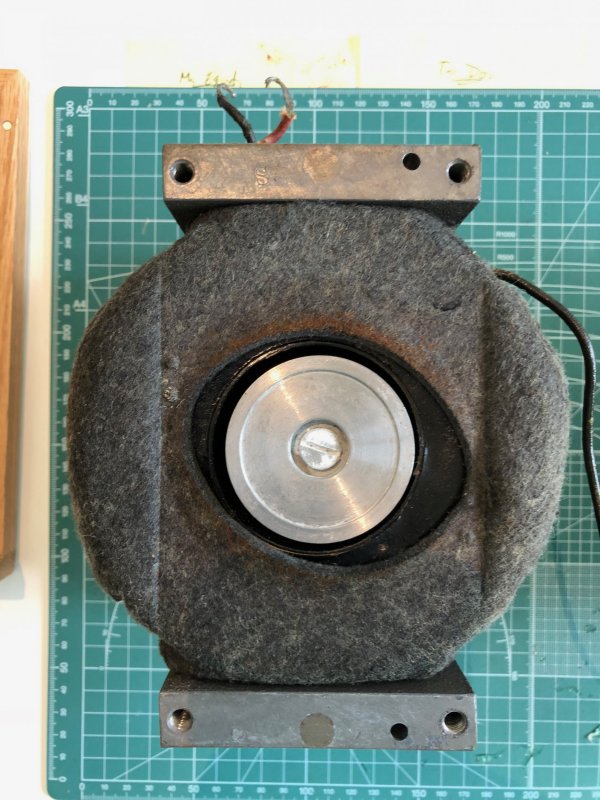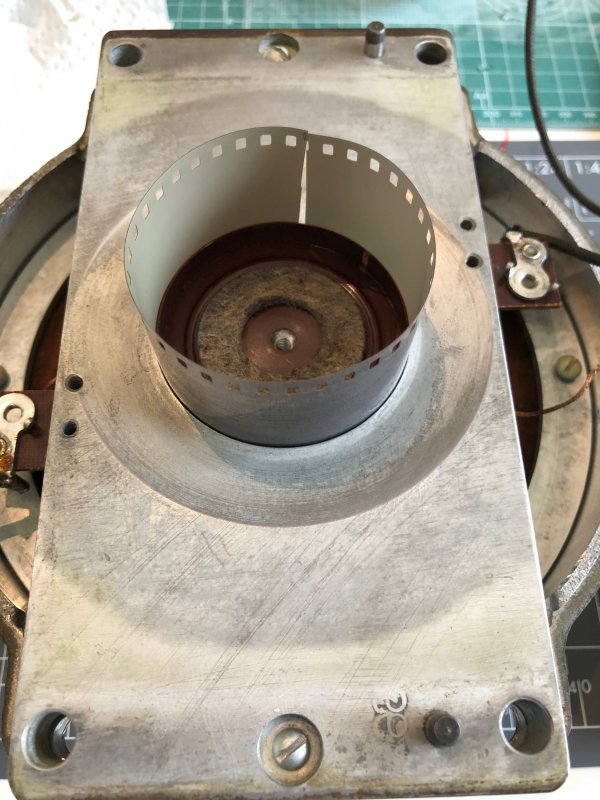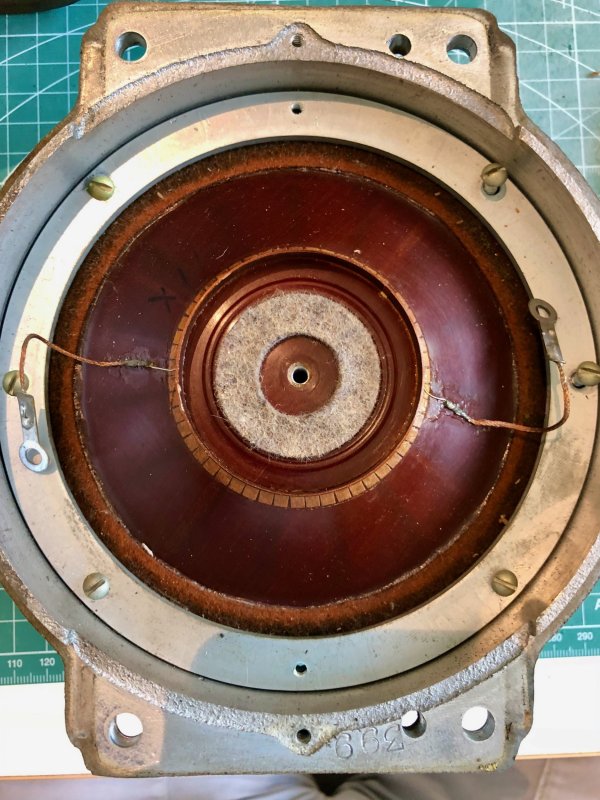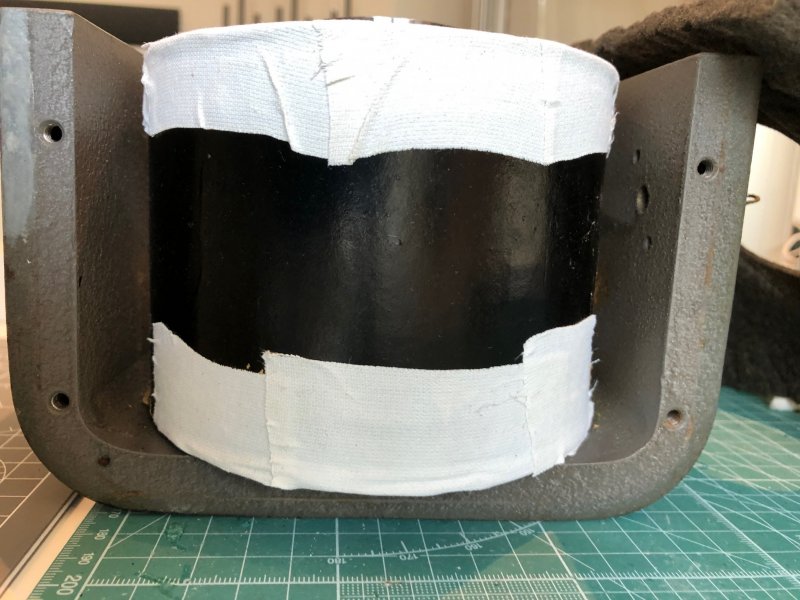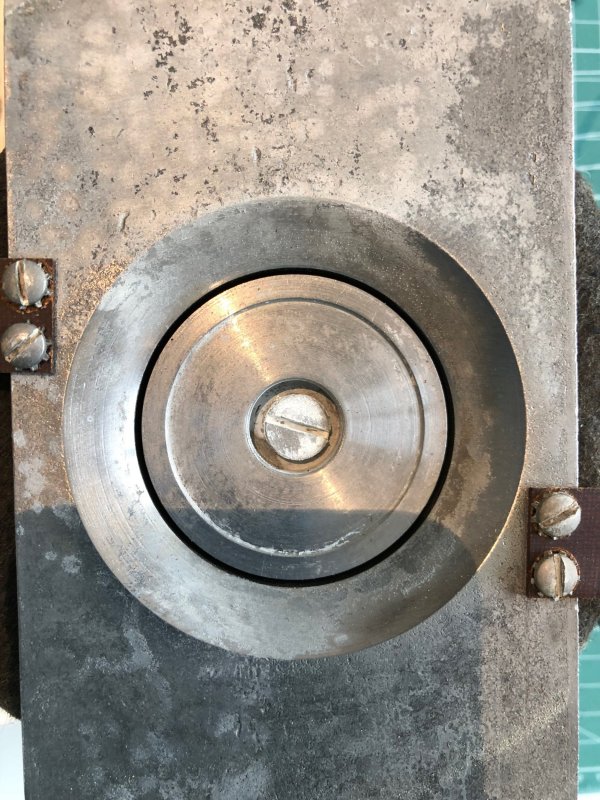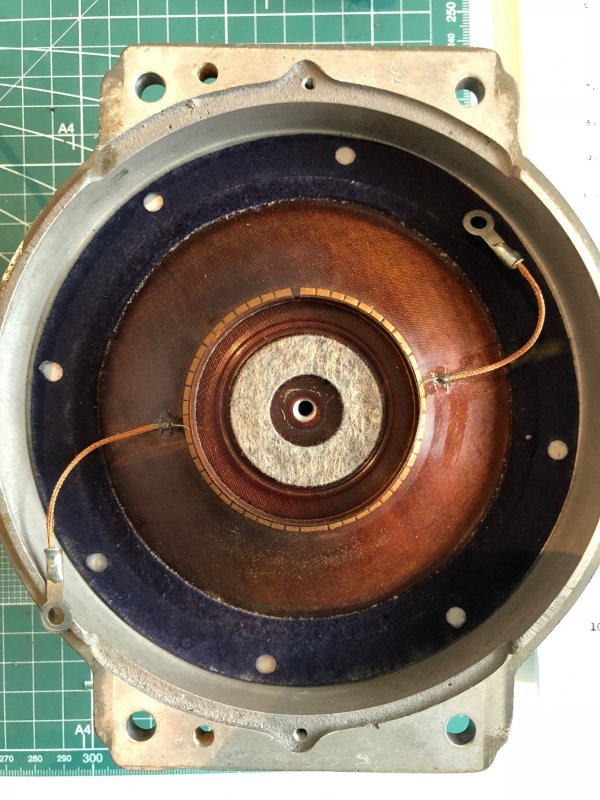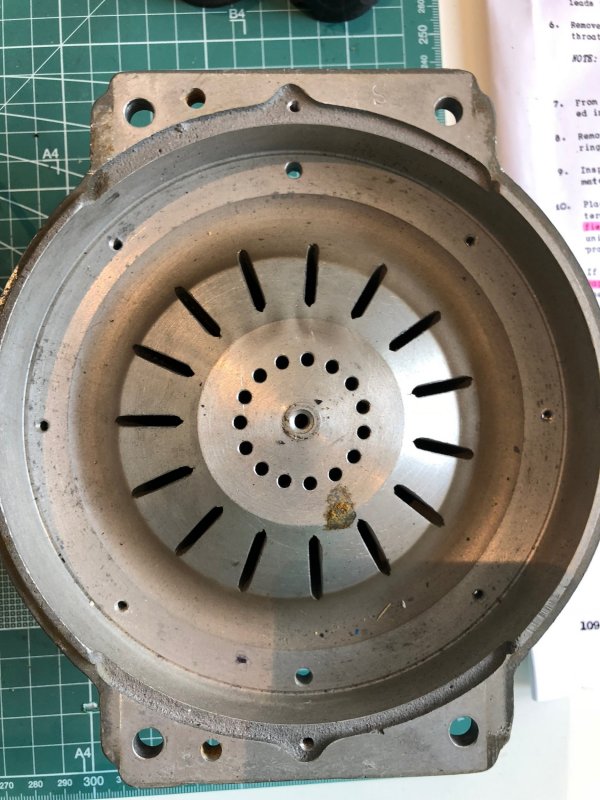What about voicecoil insulation - is it same?Mains transformers or DC coils are now usually vacuum-impregnated to ensure a high level of electrical operational reliability if mains voltage can be transported in the event of a fault.
I don't know about the old field coil because I've never disassembled a field coil bass
Rather, I think a defect in the voice coil or the membrane is more likely due to heat. It's pure speculation on my part with no evidence.
P.S
transformer insulation only melts immediately above 160 degrees no panic.
Field Coils for Audio Systems
- Thread starter Audiophile Bill
- Start date
You are using an out of date browser. It may not display this or other websites correctly.
You should upgrade or use an alternative browser.
You should upgrade or use an alternative browser.
Then it shouldn't matter with power lines if one used high voltage/low current or vice versa to deliver power to sub stations, homes etc. but it does. Even if the power is the same. How do you reconcile that?Hm. Since its assumed that both approaches make the same magnetic density, it follows that the same losses will occur in the wiring- higher voltage- thinner wire... So I would expect no difference with regards to heat.
"
Why High Voltage
The primary reason that power is transmitted at high voltages is to increase efficiency. As electricity is transmitted over long distances, there are inherent energy losses along the way. High voltage transmission minimizes the amount of power lost as electricity flows from one location to the next. How? The higher the voltage, the lower the current. The lower the current, the lower the resistance losses in the conductors. And when resistance losses are low, energy losses are low also. Electrical engineers consider factors such as the power being transmitted and the distance required for transmission when determining the optimal transmission voltage.There is also an economic benefit associated with high voltage transmission. The lower current that accompanies high voltage transmission reduces resistance in the conductors as electricity flows along the cables. This means that thin, light-weight wires can be used in long-distance transmission. As a result, transmission towers do not need to be engineered to support the weight of heavier wires that would be associated with a high current. These considerations make high voltage transmission over long distances an economical solution."
Resistance losses = heat. The hotter it gets, the higher the resistance the greater the losses and the more heat is generated.
Last edited:
I just want to say 'thank you' to Bill, Brad, Ralph, GoodEar, Carlos, Zeotrope and all other participants for this high-quality and highly-educational thread. Excellent discussion on field-coil technology and related! I've learned a lot from you guys. 
What about voicecoil insulation - is it same?
so many different materials are used for the voice coil silver, copper, aluminum that's just simple dip paint. I think it will become brittle faster and cannot withstand such heat.
For the bass, you could have a second rear wall with ventilation slots made by a metal worker has no effect on the sound. This is difficult with the horn driver in the treble or midrange. Opening the pressure chamber could produce a different frequency response. can get better but also worse. try out maybe like that

Last edited:
Attachments
Has anyone here tried the (very) expensive Voxativ field coil drivers? They look impressive (as does their Alnico driver) but man the price is prohibitive (can't imagine a commercial design with such drivers...).
By comparison, the Supravox field coils are far more reasonably priced; however, the 215 EXC, while technically full range, is not really compared to a whizzer based driver (I have the 215-2000 Alnico drivers and they need a tweeter). The 285 EXC is a very interesting bass driver for pretty reasonable money.
By comparison, the Supravox field coils are far more reasonably priced; however, the 215 EXC, while technically full range, is not really compared to a whizzer based driver (I have the 215-2000 Alnico drivers and they need a tweeter). The 285 EXC is a very interesting bass driver for pretty reasonable money.
That is correct.What do you mean you don't feel any rise in temperature? You mean you put your hand on the back of the driver that houses the field coil and it doesn't get any warmer?
Both the 4" midrange compression driver and the 15" bass driver use 12V/1A power.Hi Adrian - is this for woofers or the CD or both?
Best.
Power = voltage x current. It does not matter whether you run it at 120V/100mA or 12V/1A, it dissipates the same amount of power.Actually, I think the losses will be less as the heat is more from current flow. This is why they run power lines at 100K V or more to minimize losses in the power lines. High voltage/low current should have fewer losses...I think.
But not the same amount of resistive losses, which is what heats a wire.Power = voltage x current. It does not matter whether you run it at 120V/100mA or 12V/1A, it dissipates the same amount of power.
I think you are confusing transmission losses and power of the load. When you are talking about the voltage applied to the field coil and the current (DC), you are considering the efficiency of inducing a magnetic field, with any inefficiency appearing as heat. With a power line, you are talking about an AC current going through a cable in free air over a very long distance, where the resistance of the power line itself is an important factor.Then it shouldn't matter with power lines if one used high voltage/low current or vice versa to deliver power to sub stations, homes etc. but it does. Even if the power is the same. How do you reconcile that?
"
Why High Voltage
The primary reason that power is transmitted at high voltages is to increase efficiency. As electricity is transmitted over long distances, there are inherent energy losses along the way. High voltage transmission minimizes the amount of power lost as electricity flows from one location to the next. How? The higher the voltage, the lower the current. The lower the current, the lower the resistance losses in the conductors. And when resistance losses are low, energy losses are low also. Electrical engineers consider factors such as the power being transmitted and the distance required for transmission when determining the optimal transmission voltage.
There is also an economic benefit associated with high voltage transmission. The lower current that accompanies high voltage transmission reduces resistance in the conductors as electricity flows along the cables. This means that thin, light-weight wires can be used in long-distance transmission. As a result, transmission towers do not need to be engineered to support the weight of heavier wires that would be associated with a high current. These considerations make high voltage transmission over long distances an economical solution."
Resistance losses = heat. The hotter it gets, the higher the resistance the greater the losses and the more heat is generated.
The resistive loss is the voltage drop across the length of wire multiplied by the current. Since a high current coil needs fewer turns to achieve the same magnetic flux, thicker wire can be used. Since the resistance of the wire is inversely proportional to the square of the radius of the cross section, wire resistance is lower in a high current field coil.But not the same amount of resistive losses, which is what heats a wire.
Last edited:
Both the 4" midrange compression driver and the 15" bass driver use 12V/1A power.
Do you by any chance know what flux the compression driver and woofer is making with this voltage/current?
So you are arguing the opposite - that the low voltage/high current field coils will have less resistance and therefore less distortion?The resistive loss is the voltage drop across the length of wire multiplied by the current. Since a high current coil needs fewer turns to achieve the same magnetic flux, thicker wire can be used. Since the resistance of the wire is inversely proportional to the square of the radius of the cross section, wire resistance is lower in a high current field coil.
So you are arguing the opposite - that the low voltage/high current field coils will have less resistance and therefore less distortion?
I don’t think this has a relationship with distortion per se as the flux is held constant as long as wattage is the same regardless whether this is high current / low voltage or high voltage / low current.
I use the Classic Audio 6475 midrange, with recommended power input of 12V/1A and the 1501 woofer at 12V/1.2A. Their website does not specify the magnetic flux density, but judging by their sensitivity (110dB and 100dB respectively), I would think the flux density is substantial.Do you by any chance know what flux the compression driver and woofer is making with this voltage/current?
Since unlike a transformer, the field coil operates on DC, the voltage drop is completely resistive. Since R = V/I, the lower the current, the higher the loss. Since the field is directly proportional to the current, a 1A design will need only 1/10th of the number of turns of a 100mA design. The length of the wire will only be 1/!0th as long. Given the same amount of space, a wire 10x as thick can therefore be used, resulting in a cross-sectional area of 100x as large. Since resistance is proportional to length and inversely proportional to cross-sectional area, that means the 1A design will have a resistance 1/1000th of that of the 100mA design to produce the same magnetic flux. Power loss = I^2*R. As current is 10x higher but resistance is 1/1000th, the loss in the 1A design is only 1/10th of that of the 100mA design. Of course, there is a limit to how high the current can go, such as the stiffness of the wire etc.So you are arguing the opposite - that the low voltage/high current field coils will have less resistance and therefore less distortion?
I use the Classic Audio 6475 midrange, with recommended power input of 12V/1A and the 1501 woofer at 12V/1.2A. Their website does not specify the magnetic flux density, but judging by their sensitivity (110dB and 100dB respectively), I would think the flux density is substantial.
Yes it must be quite high for that sensitivity level which seems incredible for the low voltage. Maybe someone from Classic Audio can give more data as sounds interesting.
In an AC high tension line, which can run for hundreds of miles, you have to consider the cost and weight of heavy wire. That's why they run the high voltage, so as to minimize those two aspects. In fact they also run a different waveform which is rather spikey (which is why you get noise from high tension lines; they don't use a sine wave) to increase efficiency.Then it shouldn't matter with power lines if one used high voltage/low current or vice versa to deliver power to sub stations, homes etc. but it does. Even if the power is the same.
In a field coil, where cost and weight are secondary concerns, you can run either approach- low current high voltage or low voltage high current. The former is mostly used in vintage radios and the like since the field coil serves double duty as a choke in the B+ supply for the radio. Divorced of that concern and since lower voltage high current supplies have ready availability, modern field coils tend to be the lower voltage variety. But if you were to build two of them, one of each type serving the same voice coil gap of the same magnetic density, I think you'll find the heat is the same because the losses are the same.
There is a corollary of Kirchoff's Law that would be violated were this not so.
Similar threads
- Replies
- 1
- Views
- 326
- Replies
- 52
- Views
- 4K
- Replies
- 4
- Views
- 2K
- Replies
- 1
- Views
- 220
| Steve Williams Site Founder | Site Owner | Administrator | Ron Resnick Site Owner | Administrator | Julian (The Fixer) Website Build | Marketing Managersing |








